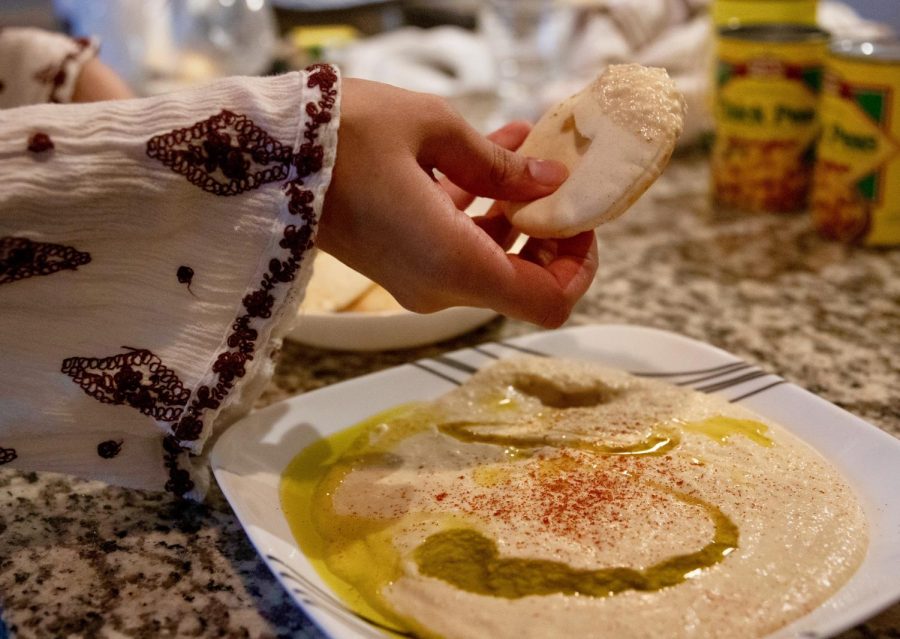Usually, the dishes shared through “Sharing Food” are relatively unknown to the majority of readers, sparking a new interest in a dish or ingredient that has not yet been explored in the average student’s kitchen. But others, like this week’s recipe of Hommous bi Tahini from Students for Justice in Palestine (SJP), have already made their way into American food culture.
Who doesn’t love hummus? It’s an easy snack, a savory dip and can be found in almost any grocery store under the sun, but according to Nadia Aruri, outreach coordinator of SJP, the hummus sold in American grocery stores is nothing like the hummus made in Palestine and the Middle East. To get close to the authentic taste, you’ve got to make it yourself.
Hummus’ history is a blurry one; a heavy debate surrounds where the dish was invented, according to Aruri. Whether or not the dish originated in Palestine, it’s a staple in Palestinian cuisine and the greater Middle East –– “It’s a dish that, you know, you will have at almost every meal if you were to go to Palestine, and it’s been around for thousands of years in the Middle East,” Aruri said. “A meal is not complete without it.”
She has fond memories of eating hummus: She remembers waking up to the grinding sound of her mom working the food processor, making an early morning batch of hummus for the day, eating it at every meal when she visited Palestine and sharing the dish with relatives on special occasions.
Aruri pairs her hummus with herbs, and it can be eaten with pita bread and kofta, a Middle Eastern meatball, or slathered on a sandwich. Olive trees are a major agricultural crop in Palestine, making olive oil a staple ingredient in Palestinian cooking. Aruri will drizzle some Palestinian olive oil on top of the dish to finish her plate.
Since hummus gained popularity in America, grocery stores have sold many different iterations of the dip, some traditional, others not so much. At Trader Joe’s, you can find chocolate, buffalo style or dill pickle varieties of the dip.
To stay close to the authentic version, Aruri said chickpeas and tahini, a sesame paste, need to be the two primary ingredients. Anything that strays from that, like chocolate or dill pickle, is not authentic.
“I think people are awesome when they want to get creative. But at a certain point, you know, you can’t alter a dish too much without almost being disrespectful to where it comes from,” Aruri said.
Sharing food, whether that be recipes or ingredients, is easy in a globalized world. But when you are making a food that’s significant to a specific culture, you must treat the process with respect, Aruri said.
“I think sharing food is a great way to kind of experience other cultures and diversify your palate,” she said. “But I think that it’s important to try to stay authentic to the original, or at least to recognize that this dish has a significance that comes from a certain place.”
From Mary Salloum’s “A Taste of Lebanon”: Hommous bi Tahini recipe
Ingredients
1 19 oz. can chickpeas or garbanzo beans (drain liquid and save)
¼ cup sesame seed paste (tahini)
1 clove garlic
½ tsp salt
¼ cup lemon juice
Blend all ingredients in a food processor or blender, adding more liquid as needed for your desired consistency. The more liquid you add, the thinner the hummus will be. Blend until a smooth consistency is achieved. Serve in a bowl, drizzle with olive oil and sprinkle with herbs of your choice. Eat with pita bread or vegetables.








